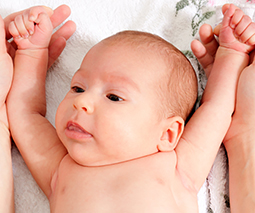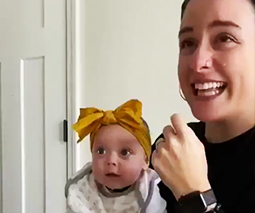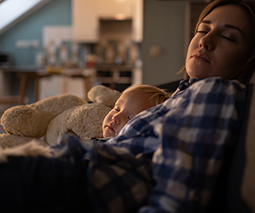Ready for take off! When should my baby start crawling and walking?

Whether it’s the bum drag, the commando crawl, the side roll or the classic crawl, your baby’s first few moves towards independence are exciting to witness.
Here we take a look at the wide range of ‘normal’ when it comes to crawling and walking.
The basics of crawling
While every baby is different, most start to attempt crawling between seven and ten months. This usually develops after your baby has figured out how to sit unassisted, and has gained some good neck and head control.
You might notice that when your baby is sitting they start reaching out for objects and trying out the sensation of supporting their own weight. This can take quite a few attempts, but eventually, your baby will realise that they can use their knees to push themselves off the floor and give them some forward momentum.
From there, it’s a whole heap of practice, and eventually she’ll even learn how to go backwards from a crawling position to seated. Many babies become proficient crawlers by the time they’re one, but a lot of babies also take their time. It’s a hugely variable skill, so don’t worry too much. If your baby isn’t moving at all by the time they’re one-year-old, chat to your doctor or paediatrician.
Types of crawling
- Hand and knee: the classic hand over hand style. Your baby will need to develop good coordination on both the left- and right-hand sides of their bodies before mastering this motion.
- Backwards crawling: Same as hand and knee, except backwards. Usually happens in the early days of crawling when your baby’s arms might be stronger than their legs.
- Commando crawling: When baby uses their forearms to drag themselves forward, and usually doesn’t involve much leg work. Some babies stick to this method, others eventually move onto their knees.
- Bum dragging: This is exactly what it sounds like, when baby simply shuffles along on their bottom. It’s not particularly efficient, but it’ll get them around.
- Rolling: Not exactly crawling, but still a legitimate way of getting around! Some babies simply roll their way over to things and might skip the crawling stage altogether.
How to help your baby crawl
While your baby will figure things out on their own, there are a few things you can do to help them along. Motivations are handy – so occasionally placing that toy just out of their reach can help get him moving.
Placing your baby on his stomach for regular tummy time is also known to help develop strong back and neck muscles. If all else fails, plop him alongside other babies who are crawling and he’ll start seeing what his mates are up to.
What if they skip crawling?
The experts are still debating exactly how important crawling is to overall development. While everyone agrees that crawling helps a baby’s overall coordination, it is not considered a developmental milestone, and it remains unclear what kind of effects (if any) it has on longterm development. Some cultures around the world are even known to skip crawling altogether, because they hold their babies until they’re capable of walking.
The take-home message? Watch for other important milestones like sitting, standing and walking.
What next? Walking
Once your baby has mastered the art of crawling, they’ll soon start experimenting with some pre-walking moves, like pulling themselves up on furniture, cruising along holding things for support, standing on their own, and then, finally, those first magical steps. Get ready, their world (and yours) is about to change!









